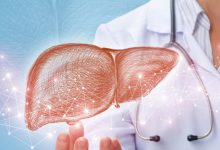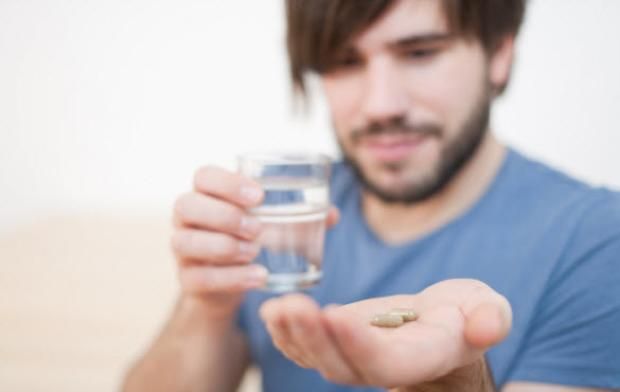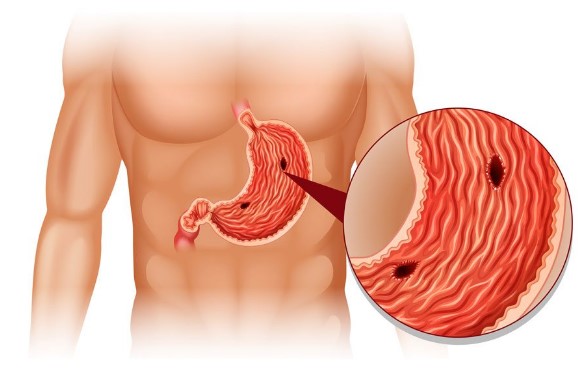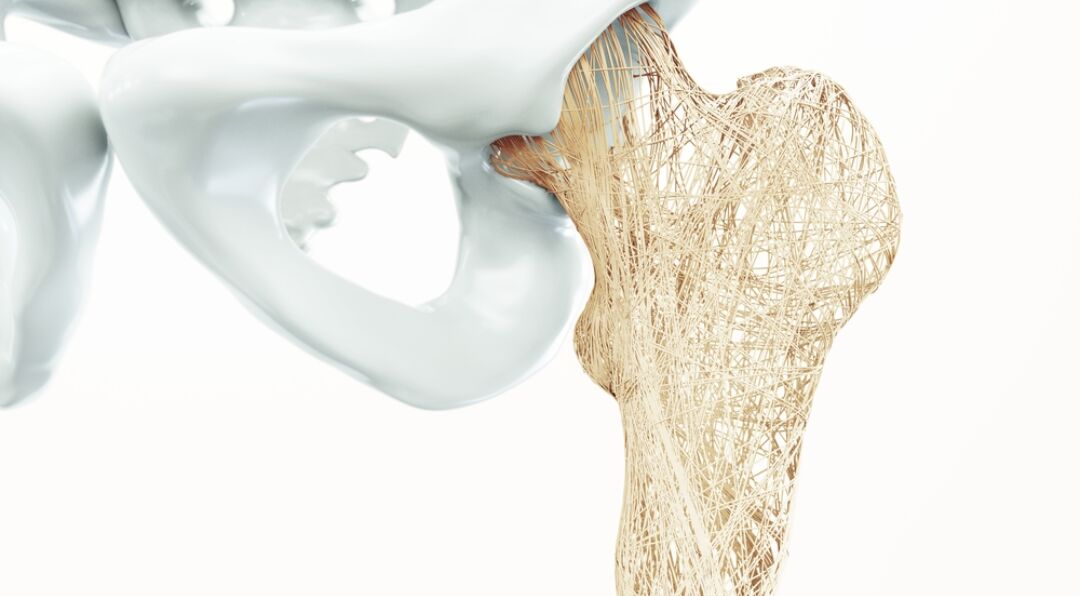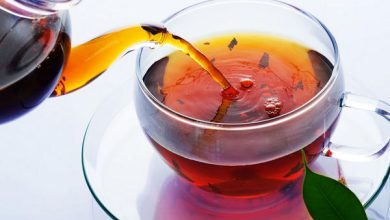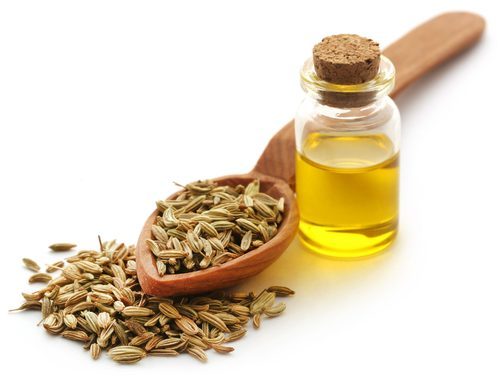What is the best way to reduce fatty liver naturally?
Fatty liver is one of the most common diseases affecting the planet from east to west. The disease has a dull appearance at first but can cost lives.
The liver is the second largest organ in the human body and is located on the abdomen’s right side. This organ of the gastrointestinal tract weighs about 1.3 kg and acts as a filter for all foods and beverages before being sent to the rest of the body. You usually can not feel your liver by touch; it is protected around the chest’s ribs. The liver is one of the organs that can repair itself naturally. Also, if a part of the liver is destroyed, it can grow again; For this reason, people can donate parts of their liver to patients in need. However, in hospitals and medical centers, it is preferred that the liver donor be brain dead.
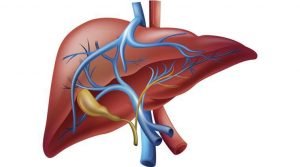
This disease does not only affect the liver; Most people who get the disease may not have a severe liver problem for the rest of their lives; But they are prone to problems such as high blood pressure, blood sugar, heart attacks, and strokes, and kidney failure. Some conditions can cause liver dysfunction, which will be discussed below (Home remedies to relieve pain in kidney stones)
What is fatty liver?
It is a type of liver disease that occurs due to enlargement due to fat accumulation in its cells. There is naturally fat in every human liver. If the liver fat is more than 5%, the person will have the disease. The disease exists in two forms: alcoholic and non-alcoholic fatty liver. As the name implies, fatty alcohol liver is caused by improper consumption of alcoholic beverages. But the causes of non-alcoholic fatty liver disease such as diabetes, obesity, and malnutrition are well known.

Another type of fatty liver is fatty liver during pregnancy, which can be associated with liver failure, kidney disorders, severe infection, and bleeding. Some scientists have suggested that the function of hormones is the cause of this disease in pregnancy. On average, 25% of the world’s population has the disease. About 20 to 30 percent of Americans have this disease, and most are unaware of their liver condition; fatty liver grows very gradually and slowly.
Causes of fatty liver:
In human liver cells, a substance called glycogen is made, released when needed in the body. The sugar in food is converted to glycogen by the liver. If liver function is impaired, fatty acids will accumulate, and the liver will become fatty.
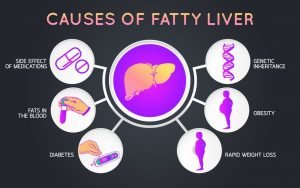
In most cases, obesity, hyperlipidemia, and a sedentary lifestyle are the causes of fatty liver disease. Still, other conditions such as diabetes, alcohol consumption, unhealthy diet, taking some anticonvulsants, and chronic diseases can also affect the development of the fatty liver. There are several possible causes for this disease, including:
Excessive obesity: Obesity can cause low levels of accumulation of liver fat. Usually, 30 to 90% of very obese people have this disease. When a person’s weight is far from average, and they do not show much mobility, the pancreas cannot produce enough insulin to control blood sugar and fat (cholesterol). The liver, which helps control fat and sugar, is depleted and stores excess fat in its cells. If this accumulation of fat increases, the liver tissues become swollen and damaged. The progression of these injuries will lead to cirrhosis of the liver, which we will explain below.
Excess belly fat: In healthy and even lean people, high fat around the abdomen can lead to this disease. Because the liver is located on the right side of the abdomen, fat accumulated in this area can also damage liver cells.
Insulin resistance: Insulin resistance in the liver raises blood sugar levels and increases fat accumulation in the liver. Because cells cannot respond appropriately to insulin, the risk of diabetes and this disease is higher.
High intake of refined carbohydrates: Continued carbohydrate consumption increases the volume of fat accumulated in the liver, especially when consumers are very obese or insulin resistant. Refined carbohydrates, due to their simple structure, are quickly digested and converted into sugar and fat; All sugars such as sugar, sweet syrups, industrial juices, as well as starches such as white flour, white rice, and pasta contain refined carbohydrates and consuming too much of them can increase the risk of this disease. Sausages also contain high amounts of refined starches.
Excessive consumption of sugary drinks: Sweetened beverages, such as regular and energy drinks, are high in fructose, which can cause fat to build up in the liver of children and adults.
Some medications: Rheumatoid arthritis drugs, corticosteroids, and muscle-building drugs in bodybuilding are some of the factors that contribute to fatty liver disease.
Symptoms of fatty liver

In general, this disease’s symptoms are silent, especially in the early stages of the disease, and the infected person does not see any particular problem. As the disease progresses, the symptoms of this disease become more noticeable and more pronounced.
Feeling tired, weight loss and loss of appetite, lethargy, and nausea, nausea, and vomiting, difficulty concentrating, pain in the right abdomen, discoloration of the neck or armpits, yellowing of the skin and cornea of the eye are some of the symptoms that show up in the fatty liver.
alcohol consumption

Alcoholic fatty liver is known as ALD. Excessive alcohol consumption produces a compound called the adenine genocide nicotinamide to protonate, which prevents the oxidation of fatty acids in the body. This combination increases the synthesis of triglycerides, which can contribute to the disease.
It can occur even after a short period of alcohol consumption. However, alcoholic fatty liver is preventable; Simultaneously, its symptoms will disappear by stopping alcohol consumption. If a person with alcoholic fatty liver continues to drink alcohol, he or she will experience the following problems:
Enlargement of the liver
The enlarged liver usually does not show any specific symptoms; in some cases, it can be accompanied by pain in the abdomen’s right side.
Alcoholic hepatitis
In this case, the liver is swollen and will show symptoms such as fever, nausea, vomiting, abdominal pain, and jaundice in the affected person.
Alcoholic cirrhosis
Alcoholic cirrhosis can damage liver tissue. This condition can have the same symptoms as alcoholic hepatitis:
- Abdominal dehydration (Doctors call this condition ascites.)
- Hypertension in the liver
- Bleeding from the body
- Confusion and mood swings
- Enlargement of the spleen
- Liver failure that in some cases can lead to death
Alcoholic fatty liver can turn into alcoholic hepatitis if the condition worsens, and if the condition worsens, alcoholic hepatitis can lead to cirrhosis.
Fatty liver types

In terms of disease progression, fatty liver is divided into 4 degrees, each of which has its symptoms and treatment strategies for this disease:
Grade 1: Simple fatty liver (oz)
In this case, some excess fat has accumulated in the cells on the liver’s outer surface; Grade 1 of this disease usually occurs for unhealthy diet and consumption of high-fat and sugary foods and lack of exercise. However, dangerous conditions have not yet started, and the patient does not notice any specific symptoms. A blood test diagnoses this stage; Ultrasound and MRI can also detect grade 1 fatty liver. This disease, however low in risk, can be a problem for older people.
Symptoms of fatty liver grade 1
Grade 1 of this disease usually does not have any fatty liver symptoms and can be treated without medication and diet. The same medical checkup you do can make you aware of this.
Grade 2: Non-alcoholic fatty liver (NASH)
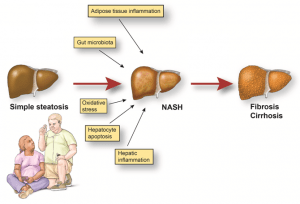
Grade 2 of this disease or non-alcoholic fatty liver disease is the most common chronic disease globally. In grade 2 of this disease, the condition becomes more acute, and the liver inflammation manifests itself.
Symptoms of fatty liver grade 2
The symptoms of grade 2 of this disease are more pronounced than those of grade 1 and show up faster. Alcohol consumption can be one of the causes of grade 2 of this disease. Depending on how advanced the fatty liver is, symptoms such as abdominal pain, bruising, enlarged abdomen, spontaneous nosebleeds, fatigue, and itchy skin can be symptoms of grade 2 of this disease.
Grade 3: Hepatic fibrosis
Some people with grade 2 of this disease progress to this stage; In this case, healthy liver tissue is injured and can not function properly. In this way, fibrous wounds begin to progress. Of course, in these conditions, there are still healthy tissues to perform the liver’s functions. However, these conditions cannot be cured by diet modification alone, and more severe treatment options are needed.
Symptoms of fatty liver grade 3
In grade 3 of this disease, the patient may suddenly become unconscious or go into a coma! Dialysis may also be needed in patients with grade 3 of this disease.
Grade 4: Liver cirrhosis
This stage is the most severe case of this disease. In this case, the volume of injured tissue will increase, and the liver will become crumpled and swollen. This condition is called liver cirrhosis. Cirrhosis of the liver usually occurs after the age of 50 to 60 years. It has been observed that people with liver cirrhosis also have type 2 diabetes. Damage from liver cirrhosis will be irreversible. The progression of cirrhosis is gradual and, over the years, causes complete cessation of liver function, which is called liver failure. Eventually, these people will need a liver transplant. In rare cases, cirrhosis can lead to liver cancer.
Symptoms of fatty liver grade 4
Grade 4 of this disease, or cirrhosis of the liver, has the same symptoms as before, and the sufferer may experience weight loss, anorexia, weakness, itching, jaundice, and more. Feeling dizzy, swollen legs and abdomen, and impotence are severe symptoms of the disease.
How is fatty liver disease diagnosed?
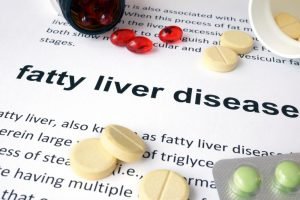
Suppose your doctor suspects this disease based on the symptoms you describe. In that case, he or she will ask you questions about alcohol consumption, family history of this disease, past and present medication history, and changes in physical condition. Talk to your doctor if you have recently felt tiredness, loss of appetite, or any other sudden event.
There are four ways a doctor can confirm your fatty liver:
Physical examination
Your doctor may notice inflammation in the liver by touching or applying pressure to the area. If your liver is enlarged due to inflammation, it will be palpable; Of course, your liver is inflamed in some cases, but it is not larger.
blood test

In many cases, a blood test can confirm the disorder by detecting an increase in liver enzymes. For example, your doctor may ask your lab to measure the factors alanine aminotransferase (ALT) or aspartate transaminase (AST) in your blood.
Higher than standard levels of these enzymes means inflammation of the liver. Of course, fatty liver can be one of the causes of hepatitis, and not every hepatitis means fatty liver. If a blood test confirms inflammation of the liver, your doctor may prescribe another way to diagnose the cause of the inflammation.
Imaging
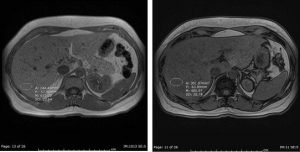
Your doctor may suggest an ultrasound, MRI, or CT scan diagnose the liver’s type of inflammation more accurately. There is another method called soft tissue elastography with ultrasound (VCTE), which diagnoses the disease by examining its stiffness.
Liver biopsy
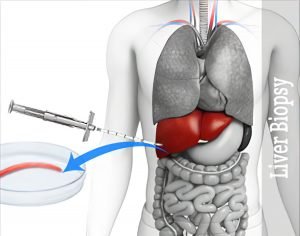
A liver biopsy is the best way to diagnose the type and severity of the liver disease. However, this method is used when other methods have not given a definite answer in diagnosing the disease. In a liver biopsy, the doctor removes part of the tissue inside the liver with a needle. In this case, some local anesthesia is injected to reduce the sensation of pain during sampling. Thus, a biopsy can confirm the presence of a liver biopsy.
How is fatty liver treated?
At present, no specific drug has been introduced to treat fatty liver, and much research is needed to discover such a drug. In many cases, lifestyle changes can help improve fatty liver disease; Things like stopping drinking alcohol, losing weight, and changing your diet in between will be helpful.
More complex cases, such as cirrhosis, require medication, surgery, and eventually a liver transplant. On the other hand, there is evidence that balanced vitamin E consumption can effectively prevent and treat fatty liver.
A suitable diet for fatty liver
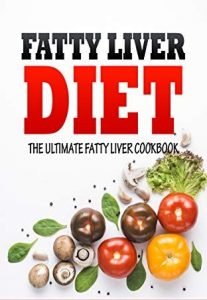
If you have a fatty liver, you need to include these in your diet:
- Include plant foods such as fruits and vegetables in your diet.
- Avoid unrefined carbohydrates such as sweets, white rice, white bread, and other refined grains.
- Limit the amount of saturated and trans fats in your diet and switch to less fried foods.
- Substitute soy for meat. Red meat is high in saturated fats, which can make fatty liver conditions worse.
- Use nuts such as pistachios, almonds, and hazelnuts in moderation. (34 Fat-Burning Foods For Fast And Easy Weight Loss)
Your doctor may also recommend that you reduce your daily calorie intake to lose weight. A study showed that reducing 500 calories from the daily diet can reduce 8% of body weight in three months, significantly reducing liver fat. Note, however, that improper diet can be one reason for the worsening of the liver.
Treatment of fatty liver with exercise
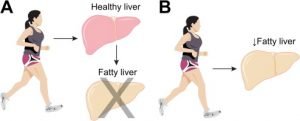
Exercise is one of the most practical and straightforward methods for treating this disease. Regular exercise such as daily walking or jogging and diet can be one of the most effective fatty liver treatments. Some exercises, such as yoga, can also help regulate fat and cholesterol. On the other hand, although it is not very useful in weight loss, endurance exercise reduces fat in the liver.
Who is at risk for fatty liver?
Fatty liver can affect any individual or group in the community due to poor nutrition. However, some people may be at higher risk for the disease due to their physical condition. For example, these people are more likely to get infected:
- Very obese people
- Insulin resistant people
- People with type 2 diabetes
- Women with polycystic ovary syndrome
- pregnant women
- People with a history of hepatitis C.
- People taking drugs such as methotrexate, tamoxifen, and amiodarone
- People with high cholesterol, triglycerides, and high blood pressure
- People with metabolic syndrome
On the other hand, research has shown that the disease is more common in women between 40 and 60 than men. Meanwhile, children are also at risk. Contrary to popular belief that some diseases are specific to adults, children may also develop the fatty liver disease due to poor nutrition and a sedentary lifestyle. Therefore, it is necessary to pay attention to children’s nutrition and exercise status to prevent this disease’s occurrence.
Is fatty liver genetic?
Research has been done on the genetics of fatty liver disease, But no strong results have been found that could link the disease to genes. However, some reports have identified genes associated with fatty liver.
Fatty liver and hepatitis
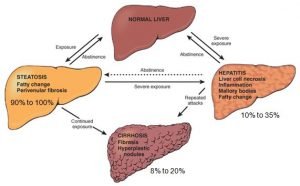
In medicine, hepatitis is called inflammation and hepatitis, divided into categories D, C, B, A, and E, depending on the severity and type of hepatitis. On the other hand, hepatitis can be caused by fat accumulation in the liver; However, hepatitis is different from fatty liver.
In hepatitis, the liver cells are destroyed, while the liver cells in the fatty liver are not destroyed. Hepatitis is a more advanced form of the disease and can develop into hepatitis C over time. In this case, viruses also enter the story! Unlike hepatitis, which is a contagious disease, fatty liver is not transmissible.
Fatty liver and death
Although this may seem harmless in the early stages and can be easily treated and controlled, its progression can be fatal. The most crucial cause of fatty liver death is cardiovascular complications. A total of 32,000 premature deaths due to gastrointestinal and liver diseases are registered annually in the country, of which 5,000 are related to liver cirrhosis.
Traditional medicine and fatty liver:
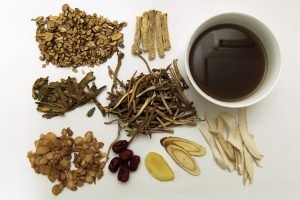
Traditional medicine considers the nature of the liver to be warmer. Therefore, for the treatment of liver disease, it usually suggests compounds that have a warm and moist nature:
- Sage is one of the traditional medicine solutions for treating fatty liver. So that consuming two tablespoons of soda decoction before breakfast can play an influential role in liver health.
- Ginger is also one of the compounds that have a preventive role against this disease by increasing metabolism and reducing fat absorption.
- Using turmeric seasoning in the diet can reduce fat storage in the liver.
- Milk thistle, also known as milk thistle, is one of the oldest treatments for liver problems. This plant enhances the regeneration process of liver cells.
- Drinking water with honey can also be useful in treating fatty liver.
- However, due to its antioxidant properties, lemon juice has a significant effect on liver cells’ regeneration. This is one of the compounds that traditional medicine recommends in the treatment of this disease.
Fatty liver and smoking
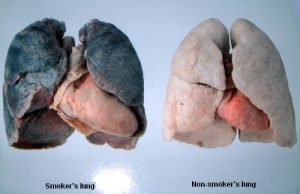
Smoking can promote the disease; Also, smoking typically hurts the liver. In a study conducted by a group of Japanese researchers, The number of smoking days was evaluated on the percentage of disease progression.
Many doctors urge patients with fatty liver disease to quit smoking as soon as possible to prevent the disease from progressing. Nicotine releases the neurotransmitters of catecholamines in the blood, which releases the fat in the fat cells.
Fatty liver and stress:
Researchers at George Washington University have shown that stress can independently lead to the disease independent of other fatty liver causes. Stress will disrupt a protein folding process; This process occurs in the brain, and its dysfunction will lead to fatty liver.
Stress itself can cause fatty liver.
One of the groups most at risk for this disease is people with metabolic syndrome. The condition of the disease is such that it provides the necessary grounds for its development. Stress management is one of the recommended factors to prevent the worsening of metabolic syndrome.
Prevention of fatty liver
A healthy lifestyle not only prevents this disease but also prevents other diseases. Therefore, the first step in preventing this disease is lifestyle changes.
Regarding healthily changing your lifestyle, the following methods are suggested:
- If you are overweight, try to balance your weight. No matter how time-consuming this process is! While it is strongly recommended that you do not go for strict and extreme slimming diets, such diets can cause fatty liver.
- If your job requires you to sit at a desk most of the day and not be too active, use your idle hour for a 20-minute walk. Sometimes, instead of fast food, try to include exercise in your entertainment program.
- Since fruits and vegetables are rich in antioxidants, could you include them in your diet?
- Avoid high-fat foods and be sensitive to your daily hydrocarbon intake.
- Take your blood sugar seriously; If you have a history of diabetes, take steps to control it.
As mentioned, fatty liver is a silent disease that affects people without a specific alarm. Although this disease is emerging, it has affected many people around the world. So far, no specific drug has been developed for fatty liver, and the only current solution is to prevent and prevent the progression of this disease.

